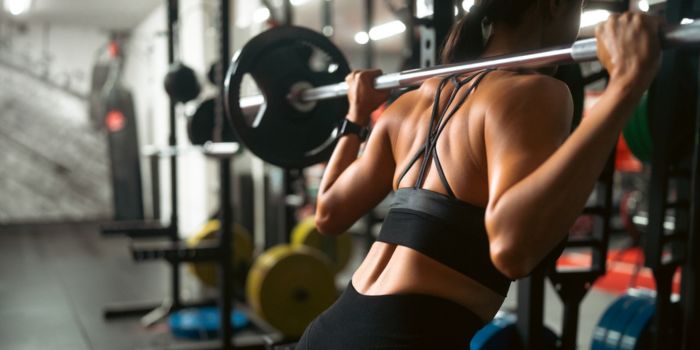Did you know that intermittent fasting has been shown to improve sleep patterns, with 23% of participants in a 12-week study experiencing better rest? This is just one of the many impressive health benefits that one can reap from fasting.
Intermittent fasting, a popular health and wellness trend, involves alternating cycles of fasting and eating. This approach is not just about what or how much you eat, but most importantly, when you eat. While IF offers numerous health benefits, from weight loss to improved metabolic health, it also presents a challenge: dealing with hunger pangs and cravings.
So how do you stop cravings when intermittent fasting so that they don’t discourage you from your fasting journey?
The key to successfully navigating intermittent fasting lies in effectively managing these cravings. In this article, we’ll go into practical and effective strategies to help you control cravings during fasting periods, so you can enjoy a smoother and more sustainable IF experience.
How Does Intermittent Fasting Work?
Intermittent fasting (IF) has surged in popularity as a lifestyle choice for health improvement and weight management. This eating pattern alternates between designated fasting periods and eating windows.
Common IF methods include the 16/8 method, where eating is restricted to an 8-hour window each day, and the 5:2 approach, involving normal eating for five days and reduced calorie intake for two days a week.
Also Read: Does Hydroxycut Work?
Why Cravings Occur During Fasting?
Cravings during intermittent fasting are often a result of the body's natural response to reduced food intake. When you fast, your body undergoes several physiological changes. Initially, it relies on glycogen stores for energy, but as these deplete, the body starts to crave quick energy sources. This often manifests as cravings for carbohydrates or sugary foods.
The Body’s Fasting Response
During fasting, the body enters a state of “ketosis”, where it begins to burn stored fat for energy. This metabolic shift is a core component of IF's effectiveness in weight loss and health improvement.
However, this transition can trigger hunger signals and cravings, particularly in the early stages of IF. The body releases hunger hormones like ghrelin, which can increase the desire for food. Understanding this biological response is essential for managing cravings effectively and harnessing the full potential of intermittent fasting.
Also Read: Low Calorie Fruits for Weight Loss
Hunger Hormones: Ghrelin and Leptin
Ghrelin, often termed the “hunger hormone” plays a key role in signaling hunger to the brain. During fasting periods, ghrelin levels typically rise. This triggers sensations of hunger. Conversely, leptin (known as the “satiety hormone”) signals fullness and helps regulate energy balance. Intermittent fasting can affect the balance and functioning of these hormones. This influences hunger and fullness cues.
How do you shift these hormones?
Intermittent fasting can lead to changes in ghrelin and leptin levels. This impacts how and when you feel hungry. Initially, increased ghrelin levels during fasting windows can cause heightened hunger sensations.
Over time, however, the body adapts to these changes. Regular fasting can eventually lead to a reduction in ghrelin levels and an increase in leptin sensitivity, which then leads to a decrease in overall hunger and an easier fasting experience.
Also Read: Weight Loss Benefits of Green Coffee Extract
The psychological aspect of cravings
Beyond the physical aspects, hunger and cravings during intermittent fasting also have a psychological dimension. How so? Well, the anticipation of fasting periods can sometimes exacerbate feelings of hunger or lead to cravings, even in the absence of true physiological hunger.
This shows us that understanding the psychology behind our eating habits is really important. Recognizing and addressing these psychological elements is the key to successfully navigating the challenges of intermittent fasting and managing cravings effectively.
Effective Tactics to Alleviate Cravings
So, how can you get these cravings under control and keep them from ruining your fasting success or making you miserable? Here are three things that help:
1. Optimizing meal timing for hunger control
Aligning your eating windows effectively is a strategic way to manage hunger during intermittent fasting. For example, if you find yourself getting extremely hungry in the evenings, consider arranging your eating window to include dinner.
This can help prevent intense cravings and overeating. Similarly, if breakfast is important to you, structure your eating window to include a morning meal. It's about finding a balance that suits your body’s natural hunger cues and daily routine.
Also Read: Is Hydroxycut Safe?
2. Hydrate, hydrate, hydrate!
Never underestimate the power of hydration in curbing hunger. Often, the body can mistake thirst for hunger. Drinking ample water throughout the day (especially during fasting periods) can help manage hunger pangs and reduce cravings.
Additionally, consuming low-calorie beverages like herbal teas or infused waters can provide a sense of fullness and help you navigate through the fasting hours more comfortably.
Also Read: How to Lose Weight After 40 Effectively?
3. The importance of mindful eating
Mindful eating during your feeding windows can significantly impact your relationship with food and how you manage cravings. Focus on eating slowly, savoring each bite, and paying attention to hunger and fullness cues.
This practice helps prevent overindulgence and promotes a healthier, more conscious eating pattern. By being mindful, you're more likely to make nutritious choices that satisfy hunger effectively. This reduces the likelihood of intense cravings during fasting periods.
Nutritional Tips to Reduce Cravings
When it comes to your food choices, these can have a big impact on your cravings. Here’s how you can set yourself up for success by making the right choices:
1. Balance your plate
It's not just about when you eat, but also what you eat. During your eating windows in intermittent fasting, choosing balanced meals is vital. A well-rounded diet, rich in nutrients, plays a crucial role in keeping cravings at bay.
Focus on incorporating a variety of foods that provide a steady supply of energy. This includes a mix of lean proteins, whole grains, healthy fats, and plenty of fruits and vegetables. Such a diet guarantees a steady blood sugar level, which prevents the sudden spikes and drops that can lead to cravings.
Also Read: Electrolyte Water: Benefits & Myths
2. Satiety superstars: fiber, protein, and healthy fats
Certain foods are known for their ability to promote a feeling of fullness and reduce cravings. High-fiber foods like legumes, whole grains, fruits, and vegetables take longer to digest and keep you satisfied for extended periods.
Proteins, found in lean meats, fish, eggs, and plant-based sources like lentils and chickpeas, are also excellent for satiety. Don’t forget about healthy fats, such as avocados, nuts, and olive oil, which are not only good for you but also help keep hunger at bay. Including these "satiety superstars" in your meals can make a significant difference in managing your hunger and cravings.
3. Steer clear of the hunger triggers: sugar and processed foods
While it's important to know what to eat, it's equally vital to understand what to avoid. High-sugar and heavily processed foods can be your worst enemies when it comes to cravings. These foods can cause rapid spikes in blood sugar, which later lead to a quick drop in energy and a subsequent increase in hunger and cravings.
By steering clear of sugary snacks, processed meals, and refined carbs, and opting for whole, unprocessed foods, you'll maintain more stable blood sugar levels and feel fuller, longer.
Also Read: The Complete Beginners Bodyweight Workout Routine
Exercising Away the Cravings
Engaging in regular physical activity is not just beneficial for overall health; it also plays a critical role in managing hunger and cravings.
Exercise can act as a natural appetite suppressant. It does this by altering hormone levels that signal hunger and fullness to the brain. Regular physical activity can increase levels of leptin, the hormone that signals fullness, and decrease levels of ghrelin, the hormone that signals hunger.
This hormonal balance helps in reducing cravings and controlling appetite and makes your intermittent fasting journey smoother.
How do you choose the right workout?
When it comes to combining exercise with intermittent fasting, not all workouts are created equal. The best types of exercise during fasting periods are those that you can sustain without feeling overly fatigued.
Low to moderate-intensity activities such as walking, yoga, light jogging, or swimming are excellent choices. These forms of exercise can be performed even during fasting windows without excessively depleting your energy reserves.
Remember, the goal is to complement your fasting routine, not to overexert yourself.
Also Read: How to Make Water Taste Better?
Harmonizing exercise intensity with your fasting schedule
Balancing your exercise routine with your intermittent fasting schedule is key to achieving optimal results. It's important to align the intensity of your workouts with your eating and fasting windows. For more intense workouts like weight training or high-intensity interval training (HIIT), consider scheduling them close to your eating windows.
This timing allows you to fuel your body appropriately before and after a workout, aiding in recovery and maintaining energy levels. For lighter activities, they can be easily integrated into your fasting periods without significant impact.
Also Read: The 10 Best Snacks for Weight Loss
Enhancing Your Fasting Journey with Hydroxycut
Incorporating Hydroxycut products into your routine can be a game-changer. Hydroxycut, a renowned name in weight management, offers a range of products that can potentially enhance your active lifestyle.
These supplements are designed to support metabolism and energy levels. No matter if you're experienced or just starting out, Hydroxycut has a diverse product line that could be a valuable addition to your regime.
Hydroxycut Hardcore Liquid Heat
This product is designed for those looking for weight loss support plus a supplement that supports increased metabolic energy with B vitamins.
Hydroxycut Advanced
If you're seeking comprehensive support for increased energy and metabolism, Hydroxycut Advanced is for you.
Hydroxycut Drink Mix
For those who prefer a convenient option, the Hydroxycut Drink Mix can be a delightful way to support your goals. It's easy to use and can be a tasty addition to your routine.
Mastering Cravings with Strategy and Support
So, how do you stop cravings when intermittent fasting? Managing cravings during intermittent fasting is about understanding and working with your body's natural responses. Effective strategies include optimizing meal timing, staying hydrated, practicing mindful eating, engaging in appropriate physical activity, and understanding the hormonal interplay of hunger. Consistency, patience, and a holistic approach are key to a successful intermittent fasting experience. Apply these tips and enjoy your fast without cravings!
Read Our Top Blogs:
Some links used in this article are being provided as a convenience and for informational purposes only; they do not constitute an endorsement or an approval by Iovate Health Sciences International Inc. or any of its affiliates (“Iovate”) of any of the products, services or opinions of the corporation or organization or individual. Iovate bears no responsibility for the accuracy, legality or content of the external site or for that of subsequent links. Contact the external site for answers to questions regarding its content.



